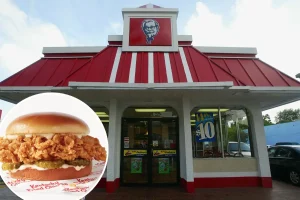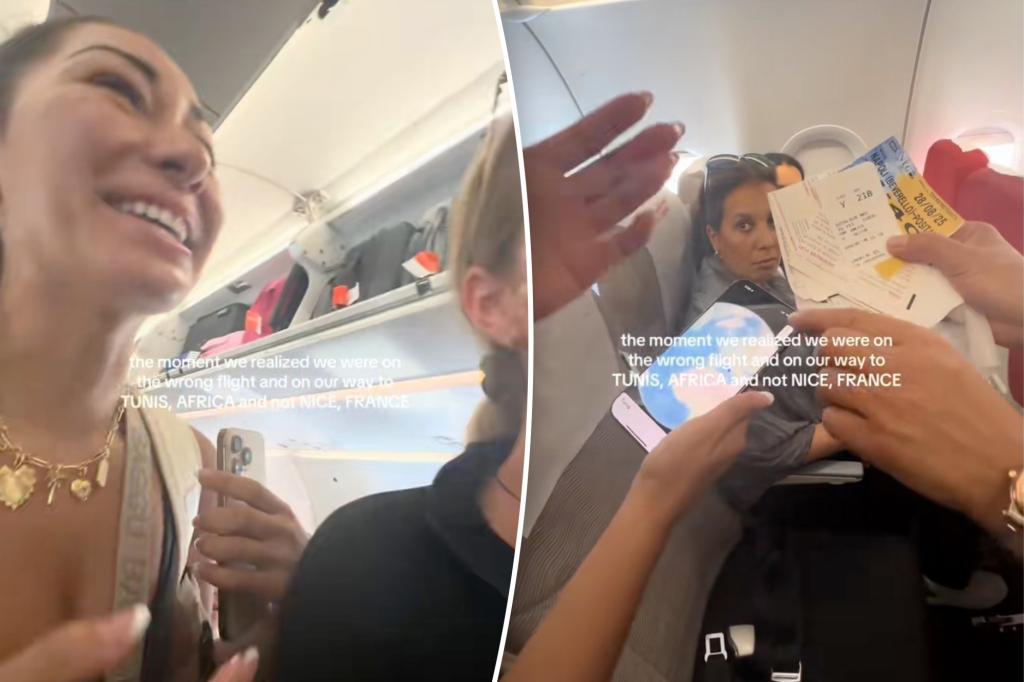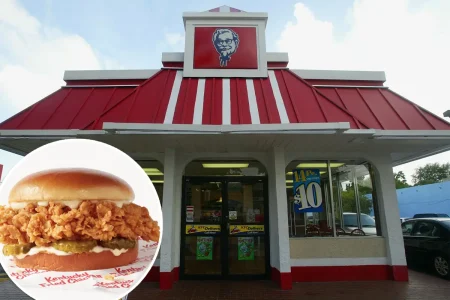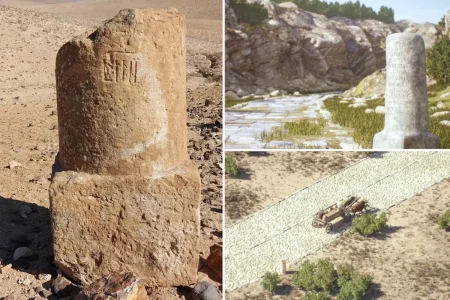The “Nice vs. Tunis” Travel Mishap: When Geography Goes Wrong
In an era of instant connectivity and digital travel bookings, one might assume navigation mishaps are relics of the past. Yet American TikTokker Brittney Dzialo recently proved otherwise in spectacular fashion, documenting a travel blunder that captivated millions. What began as a planned European getaway to Nice, France, unexpectedly transformed into an impromptu North African adventure when Dzialo and her friend accidentally boarded a Tunisair flight bound for Tunis, Tunisia. The viral video captures their dawning realization as fellow passengers inform them of their actual destination, followed by nervous laughter and frantic Google searches to locate Tunisia on a map. “Is this going to Nice?” they asked hopefully, only to have their geographical confusion gently but firmly corrected by both passengers and crew. The flight attendant pointed to their tickets, revealing the truth hidden in plain sight all along – they had tickets to “Tunis,” not “to Nice” as they had intended. In their follow-up video, Dzialo explained that an airline employee had apparently misheard their destination request, creating a mix-up between two locations separated by the Mediterranean Sea and about 950 kilometers.
The comedy of errors continued as the women briefly attempted to exit the aircraft, only to be persuaded to stay seated by crew members who, according to the travelers, assured them Nice would come “later, later, you change the plane.” This miscommunication compounded their confusion, as they didn’t actually possess connecting tickets to Nice. Resigned to their unexpected detour, they remained on board, documenting their “spiral” for their TikTok audience. “The whole plane witnessed our spiral and either found it entertaining or hated us,” Dzialo captioned one video, acknowledging the public nature of their predicament. The TikTok shows them processing their predicament in real-time – asking another passenger where Tunisia is located, receiving the straightforward answer “North Africa,” and continuing to laugh nervously while checking maps on their phones. The palpable tension of realizing you’re headed to an entirely different continent than planned resonated with viewers, some of whom found the situation relatable while others expressed disbelief at the lack of attention to such fundamental travel details.
Despite the significant detour, the story does have a happy ending. After landing in Tunis and experiencing what Dzialo described as “several different gyrations and panic conversations with flight attendants,” the friends eventually managed to navigate their way to their original destination. A follow-up video showed her friend finally stepping off a plane in Nice, with a relieved caption announcing, “y’all we made it.” This resolution suggests they were able to book new flights and salvage their intended vacation, though the details of how they arranged this last-minute correction – and at what additional cost – weren’t fully explained. The mishap highlights how easily similar-sounding place names can create confusion, particularly when communication occurs in different accents or languages, and how crucial it is to verify every detail printed on boarding passes and itineraries before proceeding through airport gates.
The internet’s reaction to the geography gaffe was predictably divided. Some commenters offered sympathetic perspective, with one noting, “Honestly of all the places in Africa you could have ended up, Tunis is actually very close to Nice.” This geological accuracy – Tunisia sits just across the Mediterranean from Southern Europe – perhaps softened what could have been an even more dramatic misdirection. However, many viewers were less forgiving, criticizing the travelers for multiple overlooked opportunities to catch the error. “You should be embarrassed at the number of things you just didn’t read to catch this problem earlier,” admonished one commenter, while others specifically took issue with the women’s demeanor throughout the ordeal: “The laughing and giggling would make me irrationally angry.” Some pointed out the most obvious missed checkpoint: “Did no one read the sign AT THE GATE???” These reactions reflect a common frustration with what many perceived as preventable chaos and disruption to other passengers’ travel experience.
Remarkably, this geographical confusion isn’t as uncommon as one might expect. The post referenced other recent high-profile travel mix-ups, including TikTok friends Lynne Mazouz and Kira Smith who intended to vacation in San Jose, Costa Rica, but instead found themselves in San Jose, California – a difference of thousands of miles and an entirely different travel experience. Even more concerning was the case of six-year-old Casper Ramos, who in 2023 was mistakenly placed on the wrong Spirit Airlines flight, landing hundreds of miles from his intended Florida destination. These incidents collectively highlight vulnerabilities in the travel system where similar place names, language barriers, and human error can converge to create significant disruptions. They also underscore the importance of vigilance throughout the travel process, especially when destinations might sound phonetically similar but represent drastically different locations.
The viral spread of Dzialo’s mishap speaks to both the universal fear of travel gone wrong and the contemporary phenomenon of broadcasting personal mishaps for public consumption. The women’s decision to document their geographical confusion in real-time transformed what might have once been a private embarrassment into shareable content viewed by millions. This transformation of travel disasters into entertainment reflects our changed relationship with mistakes in the social media age. Rather than quietly resolving their predicament, the travelers narrated it for an audience, inviting both sympathy and criticism. Their experience serves as both cautionary tale and entertainment, reminding travelers everywhere of the fundamental rule that transcends all technological advances in the travel industry: always verify your destination before takeoff. Whether booking through an app, website, or traditional travel agent, the responsibility ultimately falls on the traveler to confirm that tickets, boarding passes, and gate signs all align with the intended destination – whether it’s Nice, France or anywhere else on the map.















